Ancient copper mining operations transformed societies across continents. Miners extracted the metal to craft essential tools, durable weapons, and intricate ornaments that supported daily life and cultural expression.
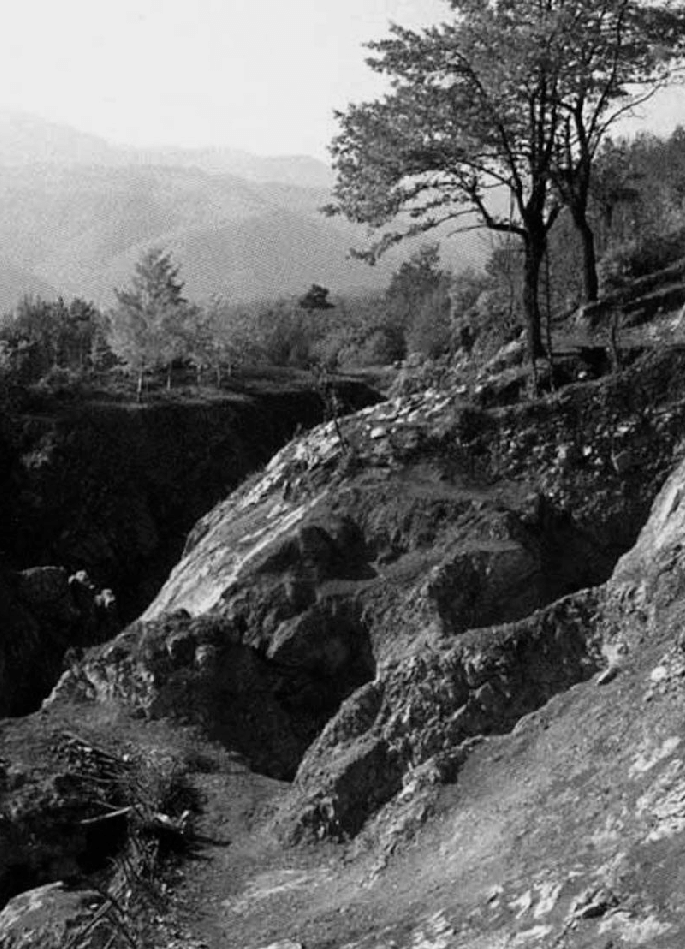
Ricardo Calvário’s 2025 paper, “Ancient Copper Mines of the Old World,” compiles extensive data from 40 prehistoric sites scattered throughout Europe, the Near East, and parts of Africa. These mines functioned between approximately 5500 BC and 1000 BC. Calvário calculates their collective output as only hundreds to low thousands of tonnes over thousands of years.
Image: Rudna Glava mining site in Serbia One of the earliest Balkan copper mines detailed in Calvário’s paper
Yet the volume of surviving copper and bronze artifacts from the same era far exceeds what these mines could have supplied. This discrepancy opens the door to alternative explanations. Calvário proposes that high-purity native copper from North America’s Great Lakes region arrived in the Old World through prehistoric transatlantic trade routes. Scientific principles from archaeometallurgy demonstrate how artisans could blend this imported copper with local smelted varieties.
Such mixing would create artifacts that match known chemical profiles. Provenance tests, including lead isotope analysis, could fail to detect the foreign component due to masking effects. Moreover tin and lead isotopes can only show the origin of each, not the copper. This hypothesis stands as untested rather than disproven. It aligns with emerging data on ancient metalworking practices and trade networks.
The Structural Imbalance in Old World Copper Production
Calvário draws on archaeological excavations, chemical analyses, and lead isotope studies to quantify outputs from Old World mines. He emphasizes transparency by flagging estimates where direct evidence remains sparse. Production figures derive from excavated volumes, ore grades ranging from 1% to 6% copper content, and smelting efficiencies between 50% and 80%. Slag-to-metal ratios, detailed in the paper’s appendix, further refine these calculations. For carbonate ores like malachite, waste averages 20 to 40 kilograms per kilogram of copper. Sulphide ores like chalcopyrite produce higher waste, often 30 to 60 kilograms per kilogram. These metrics reveal a consistent pattern of modest yields across regions.
Bronze Age communities relied on copper for axes, chisels, daggers, and vessels that facilitated agriculture, warfare, and rituals. Trade networks distributed these items over vast distances.
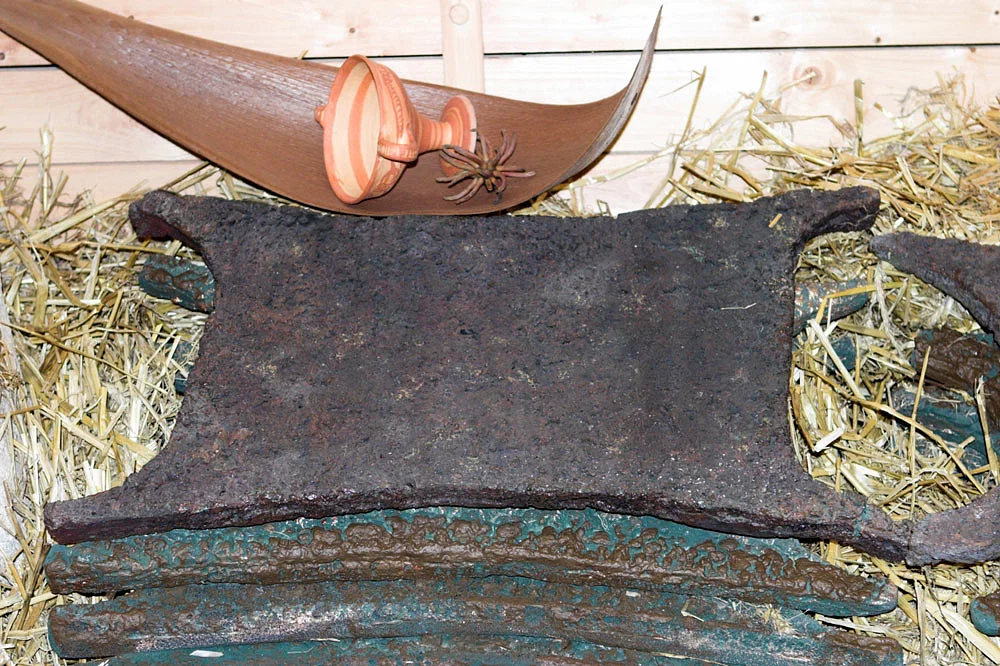
The Uluburun shipwreck, dated to the 14th century BC off the Turkish coast, exemplifies the scale. Divers recovered 10 tonnes of copper ingots from a single vessel. Calvário notes that this cargo alone represents 32 to 142 years of average production from all Old World mines from 4500BC-1000BC, based on his per-site estimates of 0.06 to 0.28 tonnes annually.
Multiplied across the thousands of artifacts unearthed from sites like Varna in Bulgaria or Pločnik in Serbia, the total copper demand climbs into the thousands of tonnes. Excavated mines fall short. Calvário dismisses incomplete explanations like extensive recycling or artifact corrosion. He argues for external sources to bridge the gap
Detailed Examination of Key Old World Mines
Calvário dedicates substantial sections to individual mines, providing historical contexts, production estimates, and purity levels backed by references. In the Balkans, Rudna Glava in Serbia emerges as one of Europe’s oldest sites, active from 5400 BC to 4600 BC under the Vinča culture. Miners sank over 25 shafts into limestone hillsides, some reaching 20 meters deep. They followed malachite veins using stone mauls, antler picks, and fire-setting techniques; igniting fires against rock faces and quenching them with water to fracture the ore.
Excavations by Borislav Jovanović from 1968 to 1989 uncovered pottery linking the site to Vinča phases. Production estimates hover between several hundred kilograms and a few tonnes over centuries, limited to high-grade surface ores. Purity levels for smelted copper average 99.1%, with trace impurities below 0.5% for arsenic or antimony, as confirmed by analyses of artifacts from nearby Pločnik and Selevac.
Majdanpek Copper Mine
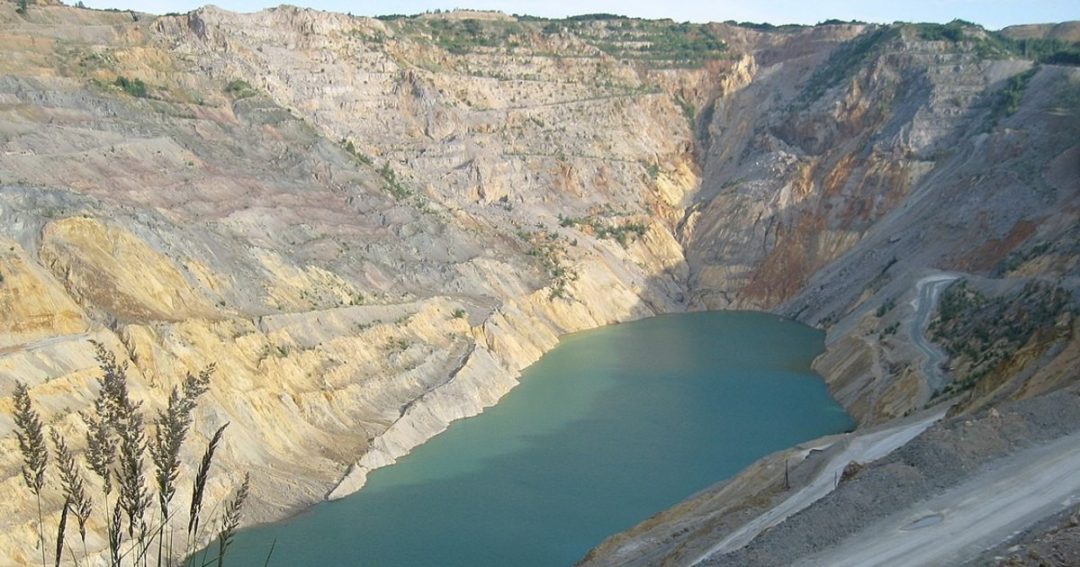
Majdanpek, also in Serbia, operated from 5000 BC to 3500 BC. This site featured dozens of Chalcolithic shafts targeting malachite and azurite in skarn and porphyry deposits. Archaeological surveys from the 1970s onward document depths of 10 to 15 meters. Miners employed similar tools to Rudna Glava, but larger ore bodies allowed greater intensity. Calvário estimates 5 to 20 tonnes of copper, smelted at settlements like Belovode. Purity reaches 99.2% for optimal outputs, dropping to 98.8% to 99.0% with secondary ores. Lead isotope data from Pernicka et al. (1993) ties artifacts to this source.
Mali Šturac Copper Mine
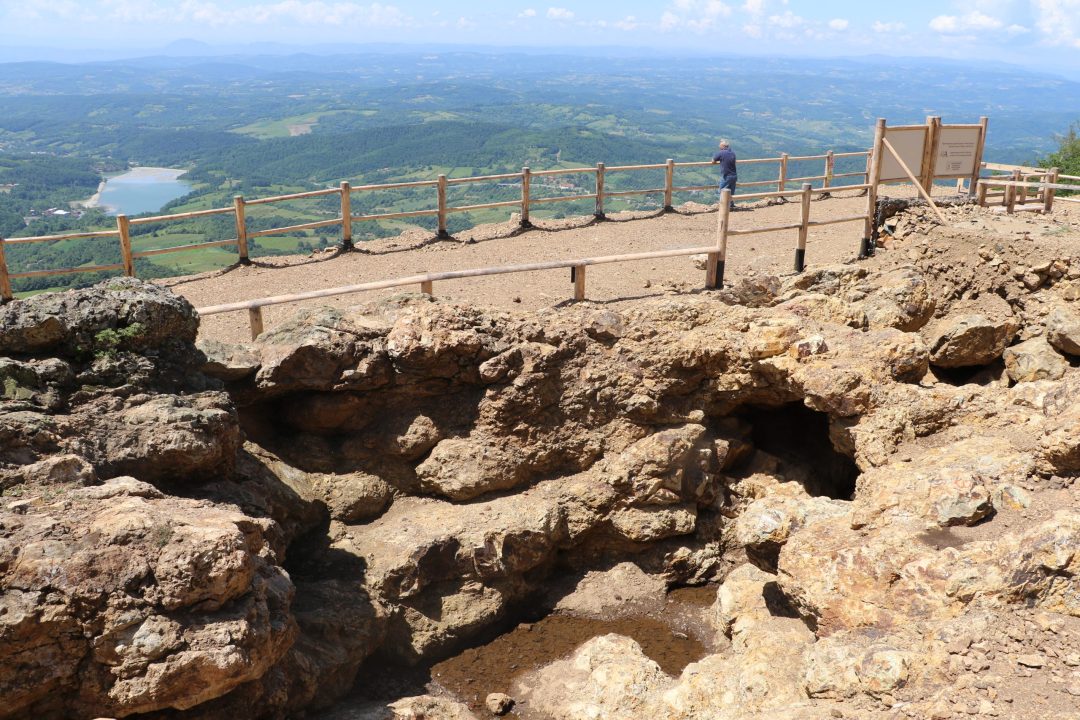
Mali Šturac, near Majdanpek, targeted malachite from 5000 BC to 4000 BC with shallow pits 2 to 5 meters deep. Production: 0.5 to 3 tonnes. Purity: 99.0%, slightly lower due to variable smelting. Ai Bunar in Bulgaria, from 4700 BC to 4000 BC, spans 11 kilometers of workings. Excavations mapped 20,000 to 30,000 cubic meters of material, yielding 20 to 40 tonnes at 99.3% purity. Isotopic links extend to Varna cemetery artifacts over 200 kilometers away.
Great Orme Copper Mine
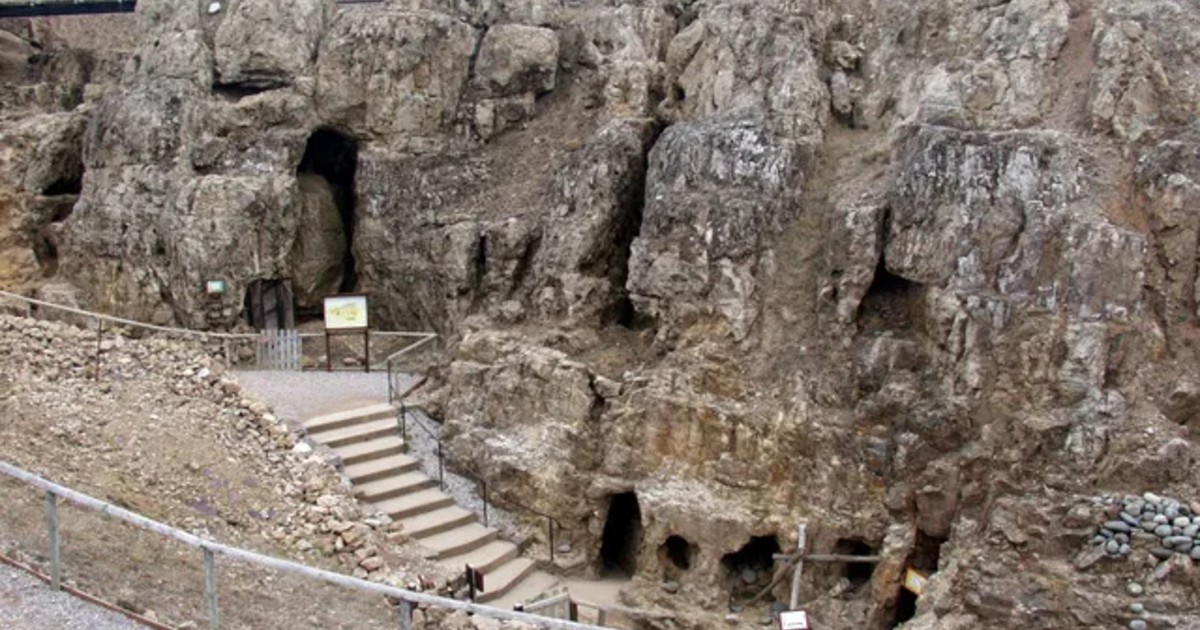
Beyond the Balkans, Britain’s Great Orme mine produced 20 to 50 tonnes from 2000 BC to 1000 BC at 98.8% purity. Iberia’s Riotinto: 50 to 100 tonnes at 98.7%. Cyprus’s Skouriotissa: 5 to 15 tonnes at 98.8%. Timna Valley in Israel: 20 to 40 tonnes at 99.0%. These figures, weighted by ore types—60% carbonates and 40% sulphides—underscore the overall low output.
Purity Levels and Smelting Techniques in Depth
Calvário correlates purity with ore types and methods. Carbonate ores yield higher purity due to lower impurities. Malachite smelting in simple hearths or crucibles minimizes contamination, achieving 99% or more. Sulphides introduce iron or sulfur, dropping purity to 98.5% to 99%.
Image: Assortment of Bronze Age copper artifacts from Europe (Source: Peter M. Fischer)
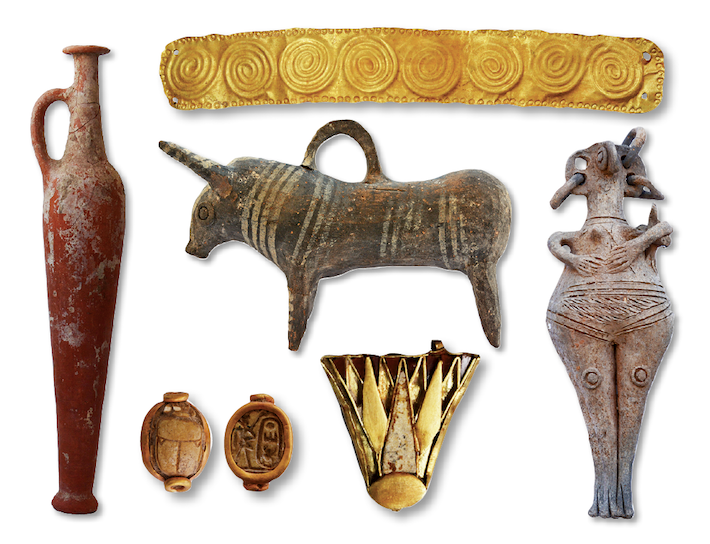
Trace element analyses from Vinča artifacts show arsenic below 0.5%, antimony similarly low. Lead isotope ratios, such as 206Pb/204Pb, distinguish sources. Balkan signatures reflect local geology, with Rudna Glava’s clean malachite producing minimal slag burdens.
| Ore Type / Mine | Copper Content (%) | Slag-to-Copper Ratio (kg/kg) | Total Waste-to-Copper Ratio (kg/kg) | Notes |
|---|---|---|---|---|
| Malachite (General) | 2–5 | 2–5 | 20–40 | Low impurities, e.g., Wadi Maghara |
| Chalcopyrite (General) | 1–4 | 5–10 | 30–60 | High iron/sulfur, e.g., Riotinto |
| Wadi Maghara (Malachite) | 2–5 | 2–4 | 20–30 | Efficient smelting, minimal gangue |
| Riotinto (Chalcopyrite) | 2–5 | 7–10 | 40–60 | High slag, significant tailings |
| Timna Valley (Mixed) | 2–6 | 4–8 | 30–50 | Mixed ores, advanced smelting |
| Modern Smelting | 0.6 | 2.2 | 150–200 | Low-grade ores, high gangue incorporation |
| Old World Average | 1–5 | ~5 | 20–60 | Weighted for 60% malachite, 40% chalcopyrite |
The appendix table lists ratios: malachite at 2-5 kg slag per kg copper, chalcopyrite at 5-10 kg. These inform conservative estimates, avoiding overstatement where data gaps exist.
The Mirror Imbalance with New World Copper
North America’s Great Lakes region contrasts sharply. Native copper deposits there supplied hundreds of thousands of tonnes, yet local artifacts account for a fraction. The Old Copper Complex extracted pure nuggets from 7650 BC onward.
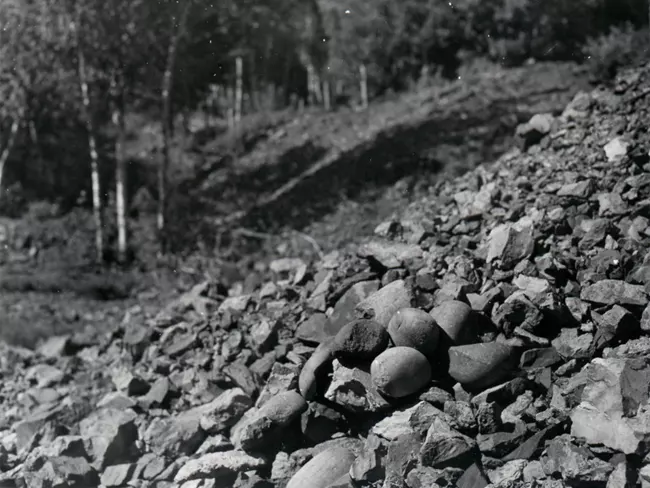
Sediment cores from McCargoe Cove on Isle Royale show lead concentrations rising sevenfold above background around 5600 years BP, copper doubling. Potassium spikes indicate wood fires for annealing.
Image: Hammerstones atop the poor rock pile near McCargoe Cove, photographed in July of 1954.
Cores from Lily Lake and Pond 2 confirm localized pollution from mining pits up to 20 meters deep. Activity intensified between 6500 and 5400 years BP, declining by 5000 years BP due to exhausted deposits or climatic shifts.
Purity hits 99.9%, with low traces like lead below 10 ppm. This surplus mirrors the Old World deficit, suggesting potential exchange.
Isotopic Comparisons Between Old and New World Sources
Lead isotope analysis measures ratios like 206Pb/204Pb to fingerprint ores. Old World Balkan copper shows ratios tied to carbonate deposits. Cypriot sulphides differ, with higher thorium-derived 208Pb.
Image: Native crystalline copper nugget from Lake Michigan, representative of the high-purity resources in the Great Lakes region
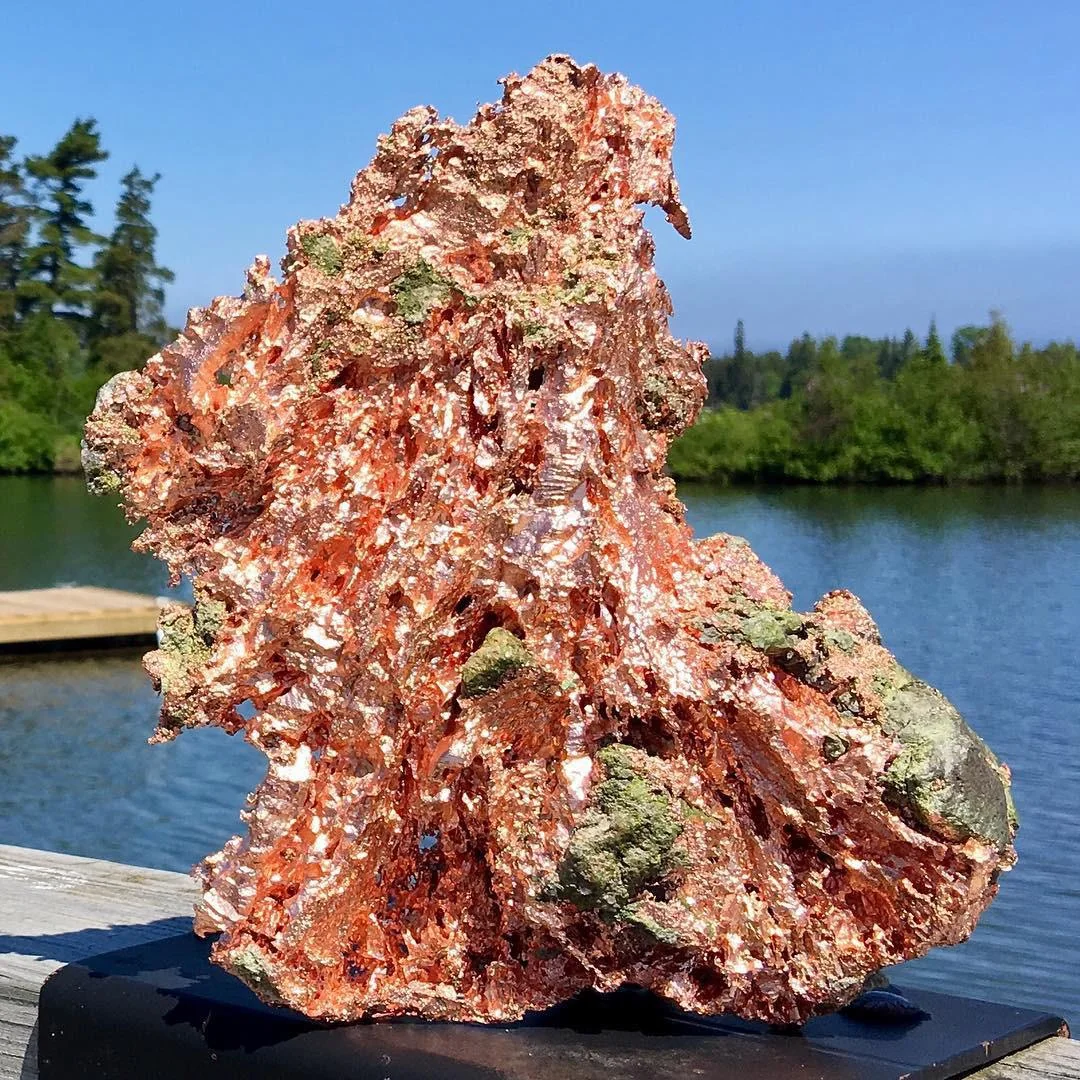
Great Lakes native copper exhibits unique Proterozoic signatures, low in 206Pb/204Pb but higher in 208Pb/204Pb. Pilot studies on Lake Superior samples confirm these distinctions.
Some Old World artifacts display anomalies. Uluburun ingots partially match Cypriot ratios but include outliers resembling Michigan profiles. Vinča items occasionally show mercury traces not typical of local smelting. Calvário interprets these as evidence of blended inputs. Copper isotope studies distinguish oxide from sulphide smelting, but native copper’s lack of processing adds another layer.
Blending Copper Sources in Ancient Metallurgy
Artisans frequently mixed metals in crucibles at 1000-1200°C. Native copper from Michigan blends seamlessly with Old World smelted copper. A 50-50 mix of 99.9% pure native and 96% smelted yields approximately 98% purity, matching Balkan artifacts. Trace elements integrate during melting. Lead from Old World ores dissolves uniformly, dominating the profile.
Examples abound. In early Iron Age China, 44 objects from Ili show blended copper sources via chemical and isotopic data. Iranian cemetery artifacts reveal alloying practices. Anatolian sites demonstrate diverse copper-silver mixes. These cases illustrate how blending creates hybrids indistinguishable from single-source metals in basic tests.
Masking Effects in Provenance Analyses
Mixing obscures origins. Native copper’s low lead content means Old World lead isotopes dominate in blends. Ratios reflect the impure source, masking the pure one. Nickel levels homogenize similarly. Recycling, common in Bronze Age Europe, adds variability; repeated melting alters distributions, breaking log-normal patterns in data.
Challenges in tracing native copper, as noted in Keweenaw Peninsula studies, highlight this. Anomalies like mercury in Vinča artifacts could stem from undetected mixes. Multi-isotope approaches might reveal more, but standard LIA often yields inconclusive results for hybrids.
Exploring the Plausibility of Prehistoric Transatlantic Trade
Hypotheses posit Minoan, Phoenician, or other mariners crossing the Atlantic. Michigan copper reached Europe, resolving shortages. Identical tool designs and pottery motifs support this. Native American trade networks spanned continents, as evidenced by copper bands and seashell rings. Bronze Age Europe’s maritime capabilities allowed such voyages
Calvário’s work aligns with these ideas. The surplus in Michigan complements Old World needs. Blending explains matching artifacts. This remains untested, offering avenues for future isotopic mapping and maritime models.
Conclusion
Calvário’s detailed synthesis exposes the Old World copper shortfall. New World native copper provides a logical supplement. Blending and masking render the hypothesis viable scientifically. Expanded research could confirm transatlantic connections, reshaping views on ancient global interactions. Untested, not disproven. For more detail his slides can be found here.
Authors Note
As someone who has studied and written extensively on this subject, I stand in solidarity with the untested yet not disproven hypothesis of a transatlantic copper trade network involving the Old Copper Culture.
My own explorations, reinforce the potential significance of this idea. I urge the academic community to approach this theory with open-mindedness and to pursue further isotopic analyses, sediment studies, and archaeological investigations to uncover the full scope of prehistoric trade connections.
The legacy of this ancient civilization deserves rigorous, unbiased exploration.

